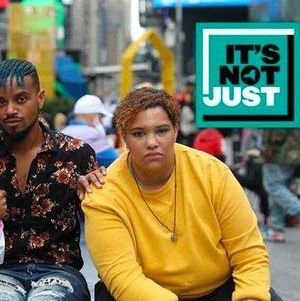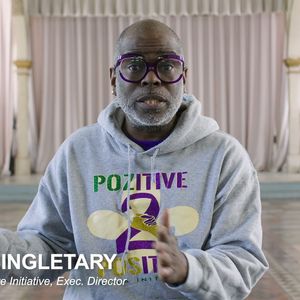Transgender people are erased from existence every day. At our funerals, at our jobs, and in the media, the world proceeds as if we don't exist.
Nowhere is this more apparent than it was at a funeral I recently attended for a young trans woman who committed suicide. She had struggled to have her family acknowledge her identity in life, posting about it on social media. She was a family-oriented person who found herself suddenly without a family.
At Aubrey Mariko Shine's funeral, all evidence of this conflict was conspicuous by its absence. Her family denied her identity in life and erased her identity in death. They referred to her with the wrong name and pronouns. In the memorial slideshow, there were no recent pictures of Aubrey. Her family went out of their way to include her friends, the majority of whom are transgender, but excluded the truth of her life as a trans woman from the event altogether.
I wish I could say this was uncommon or unexpected, but trans identities are seen as always less than, always secondary, are always expected to get out of the way for the expectations of friends and family.
The very public suicide of Leelah Alcorn had a similar conclusion. Despite her poignant words regarding her need to be accepted as a trans woman, her parents continued to misgender her. Had Leelah left her suicide note on a piece of paper rather than on her Tumblr blog, I have no doubt that we would never have known about her struggle, her joy at discovering her identity, or her pain with the realization of the role that transgender people are expected to play in society.
But Leelah and Aubrey aren't the only victims of a machine of prejudice that -- when it fails to kill us outright -- attempts to induce us to self-harm. Think of Zander Mahaffey, a 15-year-old trans man from Atlanta, who documented the abuse he suffered at the hands of his so-called caretakers. Or of Melonie Rose, a 19-year-old trans woman from Laurel, Md. Or Ash Haffner, who just last month took his life in the same fashion Alcorn did, leaving a note on his iPad that his mother found after she came across her child's body. Or Eyelul Cansin, a 23-year-old Turkish transgender woman. For every name we know, there are surely many that we don't.
Beyond the shared truth of their suicides, all of these trans people had something else in common. They left electronic evidence of their imminent passing -- for example, Leelah left a detailed blog post on Tumblr and Aubrey posted photos of the bridge from which she ultimately leapt, with the last picture captioned "Bye."
Some have suggested that the recent suicides of other transgender teens are evidence of something called the contagion effect, where media reports of one suicide encourage others to do the same. While the contagion effect has been shown to exist and is a measurable phenomenon, broadly suggesting that a trans teen using the same method to leave a note is indicative of contagion seems a little thin to me.
The overall suicide attempt rate for transgender people is 41 percent, according to the National Center for Transgender Equality's groundbreaking report Injustice at Every Turn. This percentage rises in an intersectional way: that is, if you are trans and a person of color, the likelihood that you have struggled with suicide is higher. If you are trans and a person of color and you've been bullied in school, it's even higher. A small amount of spotty math shows the problem.
We don't know for sure how many of the roughly 105 people who commit suicide every day are trans, but we do know that it is a minimum of 2 percent, according to the Transgender Law Center. Using those numbers as a jumping-off point, we would expect to see two trans suicides a day.
My math isn't the strongest, but it looks to me like the five reported suicides of trans people in the first three months of 2015 have more to do with an uptick in reporting around trans suicide rather than an actual increase in the number of trans people taking their lives.
The concerns of the trans community are constantly on my mind. It's why I cofounded and run a suicide hotline for transgender people. Stopping transgender suicide is my life's goal, and we need more awareness, not less. We need more reporting, not less.
While it is important that we report about trans suicides responsibly, suppressing the final political speech of trans people who gave their lives to have their voice heard is not the answer -- nor is it "responsible" reporting.
This is because trans people are more likely to commit suicide for different reasons than their cisgender (non-trans) counterparts. Part of the founding impetus for the Trans Lifeline was the realization that while cisgender people may consider or commit suicide primarily for acute reasons, like the loss of a job, the end of a relationship, or family turmoil, trans people are most likely to consider suicide for problems that are chronic, long-lasting, and generally beyond the power of one individual to remedy. We don't need to look far to find examples of these institutional issues that have no quick fix: Fear-mongering politicians are currently working to deny us bathroom access in several states, while efforts to reduce the staggering rate of poverty and underemployment among trans Americans are continually hampered by the lack of national legislation that specifically protects our access to housing, employment, and public accommodation.
Even if a trans person is independently wealthy and -- somehow -- has evolved past the need to pee, they still must navigate institutionalized transphobia that sees them arrested for "manifesting prostitution," more accurately described as "walking while trans." This hostility -- echoed in the false claim that trans women, in particular, present some inherent "threat" to cisgender women in restrooms and locker rooms -- is regularly on display in state houses and mainstream media, like when right-wing pundits misgender trans people as a way of making a point.
Ignoring transgender suicide will not make it go away. The obstacles faced by transgender people are difficult to overcome and very real. We need to resist the push to deny our existence when we are alive and erase our lives when we are gone. The problems faced by transgender people don't need to be solved by transgender people alone. It's up to everyone else. Stop discriminating against us.
As Leelah said: Fix society. Please.
GRETA MARTELA is the executive director of Trans Lifeline, which she and her partner cofounded in 2014. Trans Lifeline is the only support hotline for trans people staffed exclusively by trans and gender-nonconforming volunteers. Trans Lifeline can be reached at 877-565-8860, and more information is available at Translifeline.org.
For LGBT youth (ages 24 and younger) contemplating suicide, the Trevor Project Lifeline can be reached at 1-866-488-7386. The National Suicide Prevention Lifeline at 1-800-273-8255 can also be reached 24 hours a day by people of all ages and identities.



















































































